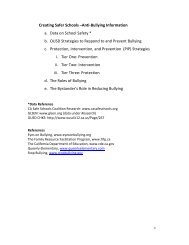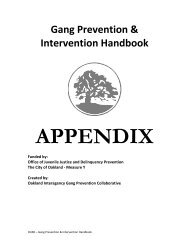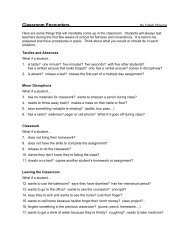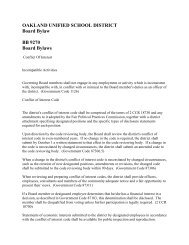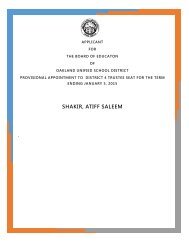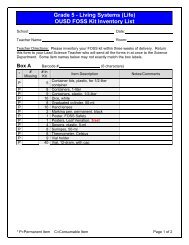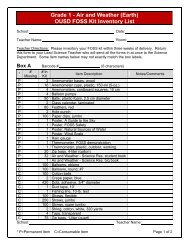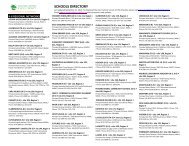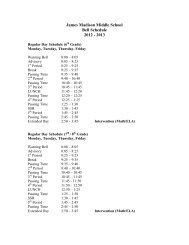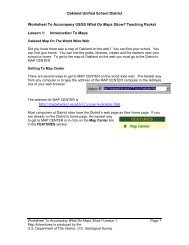Science Framework, part 1 - Free Downloads (CA Dept of Education)
Science Framework, part 1 - Free Downloads (CA Dept of Education)
Science Framework, part 1 - Free Downloads (CA Dept of Education)
- No tags were found...
You also want an ePaper? Increase the reach of your titles
YUMPU automatically turns print PDFs into web optimized ePapers that Google loves.
vForeword“The education <strong>of</strong> young people in science isat least as important, maybe more so, thanthe research itself.”—Glenn T. SeaborgIn 1998, with the adoption <strong>of</strong> the<strong>Science</strong> Content Standards for CaliforniaPublic Schools, California made acommitment that we will provide all studentsa world-class science education.Now, more than ever before, our studentsneed a high degree <strong>of</strong> science literacy. Thisupdated edition <strong>of</strong> the <strong>Science</strong> <strong>Framework</strong>for California Public Schools builds on thecontent standards, provides guidance forthe education community to achieve thatobjective, and includes the 2004 evaluationcriteria for the kindergarten-throughgrade-eightinstructional materialsadopted by the State Board <strong>of</strong> <strong>Education</strong>.This framework is California’s blueprintfor our science curriculum, instruction,pr<strong>of</strong>essional preparation and development,and instructional materials.The framework <strong>of</strong>fers guidance forscience instruction in elementary, middle,and high schools. In kindergarten throughgrade five, students receive a solid foundationand acquire basic knowledge regardingphysical, life, and earth sciences as wellas learn investigation and experimentationskills.<strong>Science</strong> instruction increases in depthand complexity in the middle grades,where the emphasis is on one sciencestrand each year. In grade six, studentsfocus on earth sciences; in grade seven,on life sciences; and in grade eight, onphysical sciences. The investigation andexperimentation standards increase in sophisticationin the middle grades and requirestudents to formulate a hypothesisfor the first time, communicate the logicalconnections among hypotheses, and applytheir knowledge <strong>of</strong> mathematics to analyzeand report on data from their experiments.At the high school level, science contentis presented as four separate strands—physics, chemistry, biology/life sciences,and earth sciences—each providing studentsthe rigor they need to prepare forcollegiate-level study and career pathways.Both the content standards and the frameworkare designed so that the standardscan be organized either as strand-specificcourses or as courses that draw contentfrom several strands. The high school investigationand experimentation standardsensure that students have experience in alaboratory setting.The framework addresses a number<strong>of</strong> audiences—teachers, administrators,instructional materials developers, pr<strong>of</strong>essionaldevelopment providers, parents,guardians, and students. It makes the importantpoint that science education musttake place in conjunction with other coresubjects, not in isolation from them.This document establishes guidingprinciples that define the attributes <strong>of</strong> aquality science curriculum at all grade levels.The framework reflects the fundamentalbelief that all students can acquire thescience knowledge and skills needed tosucceed in the world that awaits them.JACK O’CONNELLState Superintendent <strong>of</strong> Public InstructionRUTH E. GREENPresident, California State Board <strong>of</strong> <strong>Education</strong>



